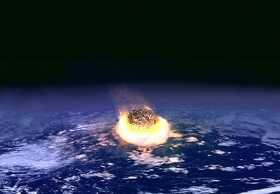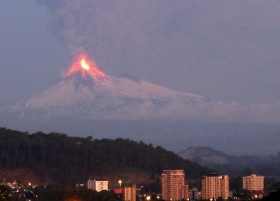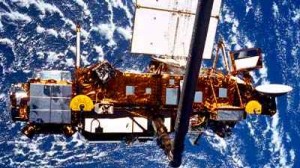 Some 250 million years ago, the earth suffered the greatest biological crisis in its history. Around 95% of all living species died out–a global catastrophe far greater than the dinosaurs’ demise 65 million years ago. How this happened remains a mystery. But there are many competing theories.
Some 250 million years ago, the earth suffered the greatest biological crisis in its history. Around 95% of all living species died out–a global catastrophe far greater than the dinosaurs’ demise 65 million years ago. How this happened remains a mystery. But there are many competing theories.
Now, they have discovered a new culprit likely involved in the annihilation: an influx of mercury into the eco-system. “No one had ever looked to see if mercury was a potential culprit. This was a time of the greatest volcanic activity in Earth’s history and we know today that the largest source of mercury comes from volcanic eruptions,” says Dr. Steve Grasby of the University of Calgary, co-author of a paper published this month in the journal Geology. “We estimate that the mercury released then could have been up to 30 times greater than today’s volcanic activity, making the event truly catastrophic.”
Pin-pointing the exact cause (or causes) of the Permian-Triassic extinction event is a difficult undertaking, mostly due to the fact that the catastrophe occurred over 250 million years ago, and much of the evidence that would have pointed to the cause has either been destroyed by now or is concealed deep within the Earth under many layers of rock. Some of the suggested causes have been meteor impact, severe volcanism, severe and sudden methane hydrate release, and marine anoxia (lack of oxygen).
Dr. Benoit Beauchamp, professor of geology at the University of Calgary, says this study is significant because it’s the first time mercury has been linked to the cause of the massive extinction that took place during the end of the Permian.
“Geologists, including myself should be taking notes and taking another look at the other five big extinction events,” says Beauchamp, also a co-author.
During the late Permian, the natural buffering system in the ocean became overloaded with mercury contributing to the loss of 95 per cent of life in the sea.
“Typically, algae acts like a scavenger and buries the mercury in the sediment, mitigating the effect in the oceans,” says lead-author Dr. Hamed Sanei, research scientist at Natural Resources Canada and adjunct professor at the University of Calgary. “But in this case, the load was just so huge that it could not stop the damage.”
About 250 million years ago, a time long before dinosaurs ruled and when all land formed one big continent, the majority of life in the ocean and on land was wiped out. The generally accepted idea is that volcanic eruptions burned though coal beds, releasing CO2 and other deadly toxins. Direct proof of this theory was outlined in a paper that was published by these same authors last January in Nature Geoscience.
The mercury deposition rates could have been significantly higher in the late Permian when compared with today’s human-caused emissions. In some cases, levels of mercury in the late Permian ocean was similar to what is found near highly contaminated ponds near smelters, where the aquatic system is severely damaged, say researchers.
No matter what happens, this study shows life’s tenacity. “The story is one of recovery as well. After the system was overloaded and most of life was destroyed, the oceans were still able to self clean and we were able to move on to the next phase of life,” says Sanei.
Source : ENN




































